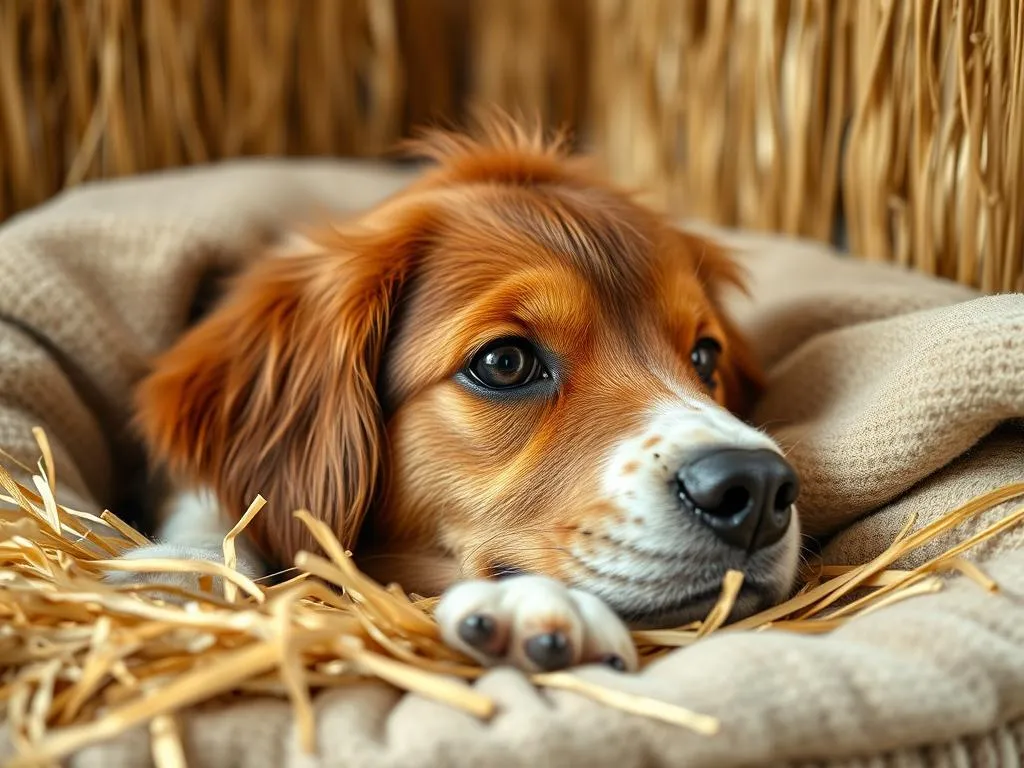
Introduction
Choosing the right bedding for your dog is crucial in ensuring their comfort, health, and overall well-being. As pet owners become increasingly aware of the importance of a proper sleeping area, various materials are being considered, including straw. The purpose of this article is to explore whether straw is good for dog bedding, examining both its benefits and drawbacks to help you make an informed decision for your furry friend.
Understanding Dog Bedding
Importance of Dog Bedding
Proper dog bedding serves several essential functions. First and foremost, it provides comfort and warmth for dogs, especially in colder climates. A cozy sleeping area allows dogs to rest and recharge, contributing to their overall happiness and health. Moreover, adequate bedding plays a crucial role in preventing injuries. Dogs, particularly those with joint issues or older dogs, benefit from cushioned support that helps alleviate pressure on their joints.
Psychologically, a comfortable sleeping area can reduce anxiety and provide a sense of security. Dogs are territorial creatures, and having a designated space that feels safe can positively impact their mood and behavior.
Common Bedding Materials
Traditionally, dog owners have relied on blankets, dog beds, and memory foam pads for their pets’ bedding needs. These options offer varying degrees of comfort and support but can also be expensive and require frequent cleaning.
In contrast, alternative bedding materials such as straw, hay, and wood shavings are gaining popularity. These materials are often more affordable and may offer unique benefits that traditional bedding cannot provide.
The Properties of Straw
What is Straw?
Straw is a byproduct of grain harvesting, typically consisting of the dry stalks left after the grain is harvested. It is important to note that straw is different from hay; while hay is made from the entire plant, including the leaves and seeds, straw consists mainly of the stems. This distinction is crucial when evaluating straw as a bedding option for dogs.
Benefits of Using Straw
Straw has several properties that make it an appealing choice for dog bedding:
-
Insulation Properties: Straw is a natural insulator, helping to retain warmth during cold weather. This can be particularly beneficial for outdoor dogs or those with limited access to indoor spaces.
-
Natural Odor Control: Straw has natural moisture-absorbing capabilities, which can help keep the sleeping area dry and reduce odors. This aspect is essential for maintaining a fresh environment for your pet.
-
Cost-Effectiveness: Compared to traditional bedding options, straw is often more affordable. This makes it an attractive choice for dog owners on a budget or those with multiple dogs.
Drawbacks of Using Straw
Despite its benefits, there are some drawbacks to consider when evaluating straw for dog bedding:
-
Potential for Allergens and Irritants: Straw can contain dust, mold, and other allergens that may irritate sensitive dogs. This is particularly concerning for dogs with respiratory issues or allergies.
-
Risk of Pests: Straw can attract pests such as insects and rodents, which could pose health risks to your dog. Regular monitoring and maintenance are necessary to mitigate this issue.
-
Maintenance Challenges: Straw bedding requires diligent upkeep. It needs to be cleaned and replaced frequently to ensure a hygienic environment, which may be more labor-intensive than traditional dog beds.
Evaluating Straw for Different Dog Breeds and Sizes
Large Breeds vs. Small Breeds
When considering straw as bedding, it’s essential to evaluate its suitability for different sizes of dogs. Large breeds may require more substantial bedding to support their weight, while small breeds may find straw comfortable for nesting.
Considerations for breed-specific needs are also vital. For example, certain breeds may prefer softer bedding due to joint issues, while others may enjoy burrowing into straw. Understanding your dog’s preferences and needs can guide your decision.
Dogs with Special Needs
For dogs with special needs, such as seniors, puppies, or those with health issues, the choice of bedding becomes even more critical. Senior dogs may benefit from softer, more supportive bedding to alleviate discomfort caused by arthritis or other conditions. Puppies, on the other hand, may find straw appealing for its texture and ability to create a nesting area.
As a dog owner, it’s essential to assess your pet’s unique requirements to determine whether straw is the best option.
How to Use Straw for Dog Bedding
Preparing the Bedding Area
Creating a comfortable environment for straw bedding starts with choosing the right location. Select a sheltered space that protects your dog from the elements, such as wind and rain. Ensure the area is clean and free from debris, which could introduce allergens or irritants.
Best Practices for Maintenance
To maintain straw bedding effectively:
-
Regularly Check for Cleanliness: Remove soiled straw and replace it with fresh material as needed. This helps keep the sleeping area hygienic and comfortable.
-
Minimize Allergens and Pests: Consider using a tarp or blanket underneath the straw to create a barrier against moisture and pests. Regularly inspect the bedding for any signs of infestation or mold.
Alternatives to Straw
While straw can be an excellent bedding option for some dogs, it’s essential to consider other natural bedding materials such as hay, wood shavings, or synthetic alternatives. Each option has its pros and cons, and the choice may depend on your dog’s specific needs, preferences, and any potential allergies.
Expert Opinions and Case Studies
Veterinarian Insights
Veterinarians have varying opinions on straw as a bedding material. Some emphasize the importance of comfort and cleanliness, suggesting that straw can be suitable if maintained properly. Others caution against using straw for dogs with specific health concerns, such as allergies or respiratory issues. It’s advisable to consult your veterinarian before making any significant changes to your dog’s bedding.
Case Studies
Real-life examples provide valuable insight into the use of straw for dog bedding. Many dog owners report positive experiences, highlighting the insulation and cost-effectiveness of straw. However, they also mention the challenges of maintenance and the need to monitor for pests and allergens.
For instance, a rural dog owner shared how straw bedding kept their dogs warm during harsh winters, while another urban owner noted that they switched to a synthetic option due to the challenges of maintaining straw in a city environment. These case studies illustrate the importance of considering individual circumstances when deciding on bedding materials.
Conclusion
In summary, using straw for dog bedding has both advantages and disadvantages. Its insulation properties, natural odor control, and affordability make it an appealing option for many dog owners. However, potential allergens, pests, and maintenance challenges should not be overlooked.
Ultimately, the decision should be based on your dog’s individual needs and preferences. By carefully evaluating the benefits and drawbacks of straw, you can make an informed choice that promotes your dog’s comfort and well-being.
FAQs
Can straw cause allergies in dogs?
Yes, straw can contain dust and mold, which may trigger allergies in sensitive dogs. It’s essential to monitor your dog and consult a veterinarian if you notice any allergic reactions.
How often should straw bedding be replaced?
Straw bedding should be checked regularly and replaced as needed, typically every few weeks or sooner if it becomes soiled or wet.
Is straw suitable for outdoor dogs?
Straw can be a good option for outdoor dogs, as it provides insulation and warmth during colder months. However, ensure that the bedding area is clean and sheltered from harsh weather conditions.
What are some alternatives to straw for dog bedding?
Alternatives to straw include hay, wood shavings, synthetic dog beds, and blankets. Each option has its benefits and drawbacks, so choose based on your dog’s specific needs.









